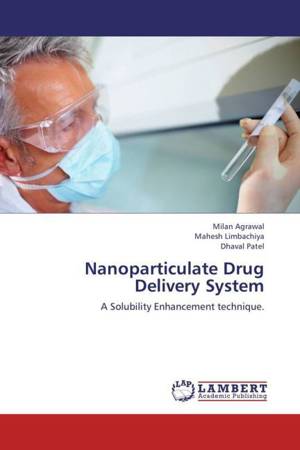
- Afhalen na 1 uur in een winkel met voorraad
- Gratis thuislevering in België vanaf € 30
- Ruim aanbod met 7 miljoen producten
- Afhalen na 1 uur in een winkel met voorraad
- Gratis thuislevering in België vanaf € 30
- Ruim aanbod met 7 miljoen producten
Zoeken
Nanoparticulate Drug Delivery System
A Solubility Enhancement technique.
Milan Agrawal, Mahesh Limbachiya, Dhaval Patel
Paperback | Engels
€ 65,45
+ 130 punten
Omschrijving
Nanoparticulate systems have great potentials,being able to convert poorly soluble, poorly absorbed and labile biologically active substance into promising deliverable drugs. The core of this system can enclose a variety of drugs, enzymes, genes and is characterized by a long circulation time due to the hydrophilic shell which prevents recognition by the reticular-endothelial system. To optimize this drug delivery system, greater understanding of the different mechanisms of biological interactions, and particle engineering, is still required. Further advances are needed in order to turn the concept of nanoparticle technology into a realistic practical application as the next generation of drug delivery system.
Specificaties
Betrokkenen
- Auteur(s):
- Uitgeverij:
Inhoud
- Aantal bladzijden:
- 60
- Taal:
- Engels
Eigenschappen
- Productcode (EAN):
- 9783659337413
- Verschijningsdatum:
- 1/02/2013
- Uitvoering:
- Paperback
- Afmetingen:
- 150 mm x 220 mm
- Gewicht:
- 100 g

Alleen bij Standaard Boekhandel
+ 130 punten op je klantenkaart van Standaard Boekhandel
Beoordelingen
We publiceren alleen reviews die voldoen aan de voorwaarden voor reviews. Bekijk onze voorwaarden voor reviews.








